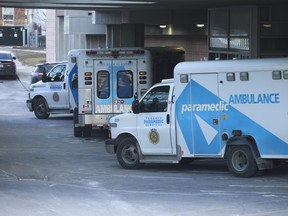Preparedness often offers no clear and tangible benefits compared to other means of coping with disasters
6}
action taken before an emergency or disaster occurs to ensure a responsive response”.
The definition of layman is ``making the bad unknown''.
Strategically, emergency preparedness seeks to reduce the amount of panic and randomness in human behavior when disaster strikes.
It is usually easier to help people deal with emergencies when impacts are prepared in advance
Readiness depends on training, education and awareness.
The limits of each measure define the limits inherent in emergency preparedness.
For example, everyone has a finite amount of attention available, some more so than others.
Prevention, mitigation, response and recovery are tested using emergency preparedness, but no test is perfect.
These tests and exercises incorporate assumptions, whether intended or not.
The money, time, and effort spent on preparation is often viewed as a means to take away other priorities.
The question "Why should I do this?" The risk of failure increases exponentially if not addressed in a convincing manner, and must be answered in the design of readiness plans.
There are many small examples of emergency preparedness.
For example, hold a biannual family meeting and ask the question, "What if something unexpected happens?" It is a kind of emergency preparedness.
Does your family (or company) have an emergency plan?
Fire drills and exercises are another form of emergency preparedness.
Try "activating" randomly and see if people know how to follow the plan. But there's a caveat here — be careful how you test your plan.
Starting a fire to test a fire plan is dangerous.
It is dangerous and illegal to shout 'fire', especially in a crowd.
On a larger scale, the integration of preparedness into the education system is one of the best examples of large-scale emergency preparedness.
For example, in Japan, children begin to be taught disaster preparedness from a very early age, from public health emergencies to earthquakes, and children are taught how to assist a stretcher.
Similarly, Canada takes the cold very seriously.
Good preparatory measures are practical, understandable to the intended audience, and affordable in terms of time, money, and other resources.
Check out "Duck and Cover" for a arguably bad preparation tool by today's standards.
Political partisanship can undermine wise preparedness efforts by governments.
It would be easier if, for example, people didn't debate which political party best supported wound care for severe bleeding in first aid courses.
Urgent Being unprepared means either assuming that bad things won't happen, or risking panic when they do, without preparing in advance.
However, there may be situations where there is little practical provision.
Preparedness often does not provide clear and tangible benefits compared to other means of coping with disasters.
For example, the benefits of having a plan to mitigate the effects of panic during a fire are not as obvious as building a dam in advance of an emergency to prevent flooding.
Also, tell people, "This is going to be really bad, what this is going to do, and this is how much you can or can't control it." may be difficult. "Mr. Bad Eyes".
Vezina is CEO of Prepared Canada Corp. and teaches Disaster and Emergency Management at York University. info@prepared.ca

The latest headlines, articles, opinions and photos from the Toronto Sun.
Thank you for registering.
Sending welcome email. If you don't see it, please check your spam folder.
The next issue of Your Midday Sun will arrive in your mailbox shortly.


